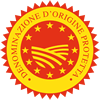Description
The Noix de Grenoble PDO is a nut belonging to the Franquette, Mayette and Parisienne varieties.
Production Area
The production area of the Noix de Grenoble PDO, that has found its soil in Dauphiné along the Isère valley, includes south-west borders of the Savoie department up to the north-east of Drôme, in the Rhone-Alps region. The plantations are highly concentrated in the Bas Grésivaudan valley and Grenoble valley, at the feet of the Vercors.
Production Method
Nut cultivation requires slightly acid soils and gradient lower then 15%. The minimum distance between trees is at least 8 m; taking into account that after the 12th year of planting, each tree must have a minimum area of 100 sq. m. The Noix de Grenoble PDO are harvested, with mechanical devices, only when they are ripe, that is, when the shell allows the fruit to come out. Harvested nuts are washed in large wooden tanks, in order to remove twigs and soil and after that, they are dried, naturally or artificially, using hot and dry air not exceeding 25ºC.
Appearance and Flavour
The Noix de Grenoble PDO of the Franquette variety is considered the queen of nuts. It has a mean size; it is long in shape with a point totally defined. The shell is hard and wrinkled and resistant to mechanic operations, its late ripening prevents it from freezing. In the Dauphiné, it represents the 80% of production. It can be sold fresh or in kernels. Since 1870, it was exported to the United States, where nowadays it is the most expanded quality. The fair and tasty kernel is highly appreciated by the confectionary industry. The Mayette variety is large, sharp and flat in the base, it remains upright when supported on a flat surface. The kernel is very pale and extremely tasty. Unfortunately, it is a delicate tree, sensitive to spring freezing. Finally, the Parisienne variety has elliptical shape, a short point and it is rounded compared to the other two varieties. The kernel is almost white.
History
The origins of Noix de Grenoble PDO in Dauphiné date back to ancient times, as evidence of some villages, for example Noyarex. Documents of 1730 described this area fully covered with nuts, but towards the end of the 19th century, after the silk worm disease and appearance of phylloxera which destroyed other cultivation, the nut started to be cultivated intensely, especially in bas-Dauphiné.
Gastronomy
Noix de Grenoble PDO is found the whole year. It is kept at ambient temperature with its shell, whereas the kernels are stored in closed containers. They are ideal as appetizers, combined with cheese dishes. They are also ideal with Saint Marcellin and goat cheese, together with grapes; perfect for dessert, used to fill tarts and cakes with honey.
Marketing
The product is sold as Noix de Grenoble PDO. It is marketed in fresh state from September to November, and dry the whole year. Different types of packaging are allowed, but they must not alter product characteristics, they are also sold loose.
Distinctive Features
The slightly acid soil and gradient lower than 15% allow an exceptional vegetative cycle, success agents of Noix de Grenoble PDO.






